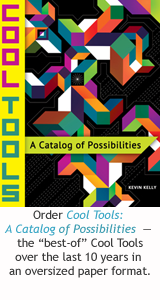-
Homemade backpacking food
Answers Given
Answers Favorited
-
What's the best guidebook for homemade backpacking food?
0 -
|
Freezer Bag Cooking by Sarah Kirkconnell is a guide to making your own just-add-water backcountry meals. Most ingredients are available at your supermarket. Compared to pre-packaged freeze-dried meals, these have twice the food and cost half as much. Read carefully, though, some of the recipes serve two people and some serve only one. http://www.trailcooking.com/store/freezer-bag-cooking-trail-food-made-simple The Back-Country Kitchen by Teresa Marrone covers every kind of back-country cooking from dressing up instant grits with cheese and egg to Cajun Venison Tenderloin. She also has a great description of how to cook planked fish. Just reading this book makes me hungry, but the essential part is the chapter on how to dry food at home. With home-dried ingredients, you are ready for these tasty recipes or the simpler ones in Freezer Bag Cooking, your choice. I made a non-dehydrated version of the Lentil-Bulgur Chili at home and the family declared it a keeper. That’s high praise. http://www.northerntrailspress.com/bck.htm NOLS Cookery is the best book for working from bulk food. This is a different style than planning each meal, but effective for larger and more frequent expeditions. |
|
The Complete Trail Food Cookbook: Over 300 Recipes for Campers, Canoeists and Backpackers by Jennifer MacKenzie, Jay Nutt, and Don Mercer. Nearly all of the recipes for our 10-day backpacking trip last summer came from this book. |
|
Kelly, can you say a little more about how the techniques in the COmplete Trail Food cookbook varies or improves on the many other ones? |
|
I just got suggestions for three other books: Trail Food; Lipsmacking Backpacking; and Backpack Gourmet. Can anyone compare these to the ones already mentioned here? |
|
One caveat with all of these books: you need to know whether you are a "boil water and pour it over something, wait 10 minutes, then eat" kind of backpacker, or you are a "prepare food by mixing ingredients and using a lot of fuel and time to boil/bake/fry it" kind of backpacker. Both are valid approaches. Both kinds of backpacker are out there, and each approach has its pros and cons, including eating the same thing over and over, eating vegetarian or not, food as fuel vs. food as nourishment, washing more or fewer dishes, carrying and using more or less fuel, and much more. Different backcountry cookbooks will take different approaches. It helps to understand which approach you're after (you may take one approach on some trips and another on other trips) when you go in search of "the best" backcountry cookbook. |
|
Personally, I am of the "eat as soon as possible" type of backpacker. I don't mind doing prep work before hand, but on the trail I don't like to fuss around. |
|
The entrees in Lipsmackin' Backpackin' are yet another style, where you combine and cook ingredients at home, then dehydrate the results. I have the book, but I don't think I've ever cooked anything from it. Contrast this to the freezer bag cooking style, where all ingredients are supermarket-available, mixed at home without cooking, and rehydrated on the trail. In a quart freezer ziplock bag, thus the name. Also contrast to the style in Back-Country Kitchen, which mixes supermarket-available and home-dehydrated ingredients for rehydration or minimal cooking on the trail. "Minimal cooking" means simmering for 15 minutes to cook the lentils, for example. Back-Country Kitchen includes many other styles, like planked fish held down with bacon (yum) or cabin cooking with a can of cherries to season the venison. If you do not want to dehydrate at home, I recommend getting some samplers of dehydrated vegetables from Harmony House (http://www.harmonyhousefoods.com/). That will get you through most of the trail recipes in Back-Country Kitchen. Most recipes only need a tablespoon or a quarter cup, so a one cup bag will last a while. The sampler makes a nice Christmas present, too. NOLS Cookery uses a fixed set of staples with a few extras for a wide variety of meals which are combined, prepped, and cooked on the trail. No at-home prep, just flat-out cooking on the trail. Be prepared to by a Banks Fry-Bake, NOLS loves those things. I'm not familiar with The Complete Trail Food Cookbook, though it appears to use the same approach as Lipsmackin' Backpackin', that is, cook then dehydrate. I have a pretty good collection of camping cookbooks. You want Bradford Angier's opinion on moose muzzle? I got it. It is even tastier than bear. |
|
A cool tool can be any book, gadget, software, video, map, hardware, material, or website that is tried and true. All reviews on this site are written by readers who have actually used the tool and others like it. Items can be either old or new as long as they are wonderful. We post things we like and ignore the rest. Suggestions for tools much better than what is recommended here are always wanted.
Tell us what you love.CATEGORIES
- Announcements
- Aural
- Autonomous Motion
- Backpacking
- Big Systems
- Clothing
- Communications
- Community
- Computers
- Consumptivity
- Craft
- Culture
- Dead Tools
- Deals
- Design
- Destinations
- Dwelling
- Edibles
- Every Day Carry
- Family
- Gardens
- Gareth's Tips
- General Purpose Tools
- Health
- Homestead
- Inner Space
- Kitchen
- Learning
- Life on Earth
- Livelihood
- Living on the Road
- Maker Tools
- Maker Update
- Materials
- Media Tools
- No Stream
- Nomadico
- Paper World
- Photography
- Play
- Podcast
- Prove Us Wrong
- Readers' Gifts
- Recomendo
- Related Stuff
- Science Method
- Somatics
- Source Wanted
- Tips
- Tool Chest
- Tools for Possibilities
- Uncategorized
- Vehicles
- Videos
- Visual Media
- What's in My Bag
- Workplace
- Workshop




